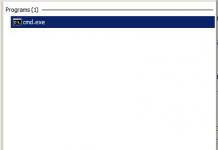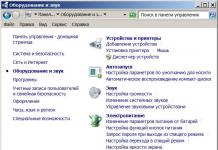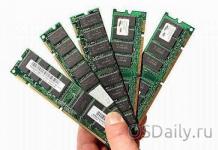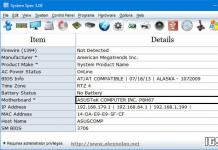No matter how powerful your Mac is, one day it will start to slow down wildly. This will be due to overheating, crooked software, a clogged disk, errors and simply discharge.
Make sure your Mac isn't overheating
Since I live near the sea and often work literally on the beach, I encounter overheating of my MacBook very often.
Without additional software, you can determine overheating in two ways:
- tactile - the device body will be too hot
- by sound - the fans inside the computer will work at maximum and create noise
But it is better to use a small free utility Macs Fan Control. It shows the temperature of the battery, processor, graphics chip and other components of the Mac, and also allows you to manually control the speed of the computer's fans.
If these values and the overall ambient temperature do not meet recommendations, the Mac will use throttling. It will lower the clock speed of the processor and other components to achieve a normal °C number.
- Use your Mac in temperatures between 10°C and 35°C (0-95% humidity)
- The temperature of the processor and video chip should not exceed 95°C
- HDD should not heat above 50°C, SSD - 70°C
Ideally, the temperature should never reach critical values.
To do this, try to use your Mac on flat surfaces that do not interfere with cooling, remove it from direct sunlight, do not place anything on the MacBook keyboard, do not block the ventilation holes, and use only Apple branded power adapters.
Macs can also become clogged with dust. For normal cleaning, it is better to contact specialists, and a special screwdriver from AliExpress for 270 rubles, a vacuum cleaner and a little patience will help you do it yourself.
Analyze processes in “System Monitoring”

If the temperature is okay, look into the processes in the System Monitoring application.
Here you are interested two tabs:"CPU" and "Memory". The first shows the processor load by applications, and the second shows RAM. Sort software by “%CPU” and “Memory” to immediately see the heaviest programs and deal with them.
Today this is more relevant than ever. For example, recently a miner application appeared in the Mac App Store, which quietly used computer resources to mine the Monero cryptocurrency and loaded the processor by 200%.
But often ordinary software behaves incorrectly. For example, lately Chrome was regularly pushing my MacBook's CPU to the limit with just a couple of tabs and almost no extensions, so I finally switched to Safari.
I suggest getting rid of any crooked software that does not know how to properly use system resources. Glitch- this is the lot of programs for Windows.
If you notice that the processor is heavily loaded by a service mdworker, you need optimize Spotlight indexing.
To do this, go to “System Preferences” > Spotlight, remove information that is useless to you from the “Search Results” tab and drag folders with a large number of small files that you do not plan to search to the “Privacy” tab.
Remove unnecessary software, clean startup

Firstly, remove all useless software from the Applications directory in Finder.
Not only does it take up disk space, but it also uses other Mac resources by hanging in the background.
For example, I actively try new applications for macOS, so I clean out this directory at least once a week. I delete from here not only what I don’t like, but also the software that I don’t use.
Secondly, figure out how to automatically load the software at system startup, which is hidden in “System Settings” > “Users and Groups” > “Login Objects”.
All applications that run in the background eat up some of the processor and RAM resources. Some of them you may need (for example, clouds like Dropbox), while others are useless (for example, the Transmission torrent client).
Erase the useless stuff from the disk, delete the cache

If the computer's hard drive is occupied by 90% or more, macOS may not have enough space for the normal operation of the system's built-in features and additional features. applications. So she will start to slow down.
To check this, go to About This Mac > Storage.
Free less than 10%? Go to the "Manage" section. Here you can clearly see what and how much it takes. First, go through the recommendations for disk cleaning, and then move on to the remaining sections: “Documents”, “Programs”, iCloud Drive.
Check the disk for errors, update the system

Mac installers are divided into two types: some do not update macOS and are guided by the principle “It works, don’t touch it,” while others install all system updates in the hope of fixing bugs and glitches.
Don't forget to also check for disk errors. They appear randomly during installation of applications and OS updates.
Just open Disk Utility, select the system drive and click on the First Aid button. The Mac will check itself for errors and try to fix them.
Just connect your MacBook to charge

When the MacBook battery discharges below 5%, macOS turns on the emergency power saving mode and the computer starts to work very slowly. Connect it to the charger and everything will work.
I especially often encounter this during the middle of the workday. Usually there are a lot of tasks, so I don’t even notice notifications about the discharge and I begin to be perplexed at the wild slowness in the Mac’s operation.
The MacBook Air is one of the most widely used laptops on the market today and is undoubtedly the most affordable MacBook in the entire lineup. However, this computer cannot be considered a budget computer: high quality workmanship and sufficient performance for working with a similar class of devices allow it, if not to become the main work laptop for many users, then at least to receive the title of an excellent companion for working in conjunction with a desktop computer.
The “bottleneck” when working with the MacBook Air can be its performance: while coping well with everyday tasks, the laptop is not able to provide comfortable work of a professional nature. The MacBook Air freezes most often due to the “dampness” of the layout itself, but in addition to this, there are a number of reasons for the decrease in system performance, which are relevant both specifically for the MacBook Air and for all Mac computers existing on the market.
Overheat
When creating its first ultrabook, Apple relied not so much on its technical performance, but on portability while maintaining the experience of using a full-fledged Mac OS. Considering the fairly powerful software, in some ways this task was accomplished, but there were some drawbacks: the thin body for a long time did not allow it to accommodate a sufficiently effective cooling system, and therefore early MacBook Air models began to noticeably slow down when running. performing more or less complex work (such as rendering and playing video with a high bitrate).
This is due to the software shutting down the second processor core when it overheats. When working with early MacBook Air models, you should install all released and available operating system updates - Apple almost immediately eliminated the problem with the drop in performance of the first revision of ultrabooks.
For all recent generations, the reason for overheating can be much more prosaic: if the computer has not been cleaned for a large amount of time (half a year - a year), its cooling system - radiator, air intakes and cooler - becomes inconspicuously clogged with dust, and therefore, in order to avoid overheating and failure of individual components of the system artificially reduces their performance.
Thus, if the MacBook Air slows down due to overheating, the first thing you should check is the cooling system. However, the use of non-standard screws to fix the bottom cover can complicate this task, so for cleaning and preventative maintenance of the cooling system (removing dust, lubricating the cooler and applying a new thermocouple), you should contact a service center if it is not possible to solve this problem yourself.
Drive problems
The problem with the hard drive has become the talk of the town for most Apple computers: having a long service life, even the slightest damage to the Mac storage can significantly affect the performance of the system. This problem is more relevant for earlier MacBook Airs, since in all recent generations the hard drive has been replaced with an SSD drive. If the MacBook Air freezes precisely because of a storage failure, this may be a consequence of two factors:
File indexing. The Mac OS system has a fairly effective Spotlight search system, with which the user can find the file or utility of interest in a matter of seconds. However, to maintain functionality, all files stored on the disk must be indexed. During normal use, indexing occurs as the storage becomes full, but after updating Mac OS or when restoring the system from a copy, Spotlight may require one-time indexing of files for normal operation. It is worth paying attention to the fact that during indexing the overall system performance drops significantly. In this case, it is advisable to wait for indexing to finish, but you can turn it off permanently if there is no need for Spotlight search. To do this, run the command “sudo mdutil -a -i off” in the terminal, in turn, the command “sudo mdutil -a -i on” will set the default indexing settings.
Damaged sectors. With active computer use, the hard drive can acquire bad sectors within just a few years of operation, which is especially true for early Apple ultrabooks. If the MacBook Air slows down due to damage to the hard drive, this may be accompanied by system freezes and crashes, as well as a complete inability to load Mac OS. This problem can only be resolved by replacing the HDD.
Lack of system resources
Since Mac OS is becoming more resource-demanding every year, and it is impossible to independently upgrade an Apple ultrabook, the MacBook Air may begin to slow down even after several system updates. You can increase performance and responsiveness by rolling back the operating system or optimizing it yourself. If it is important to use all the features of Mac OS, but the MacBook Air freezes during operation, you should clear the system of unnecessary applications and even files on the desktop. It is extremely important to use only the necessary applications: if several programs such as a browser or graphics editor are running in the background, they can take up space in RAM and slow down the system. Files on the desktop, in turn, are initially stored in memory as preview data, which also negatively affects system performance.
The easiest way to correct the situation is by disabling unnecessary applications and restarting working programs, in which case some of the RAM will be freed up and the system will work faster.
Conclusion
As practice shows, most problems with Mac OS performance can be resolved by the direct user. Of course, in some cases with a drop in performance it is difficult to do something on your own or at least correctly diagnose the problem, but even in such cases, the work of a professional can return the MacBook Air to its former performance.
Some time after a fresh installation, the system still begins to slow down. This period can vary from several months to several years - depending on how hard they work on their systems. Some users put up with it, others try to do something about the brakes and, I’m sure, achieve some success with this. But I won’t be wrong if I say that no one likes it.
What is the matter, why does the system eventually stop working as quickly as at the beginning? What needs to be done to fix this? Today we will try to figure this out.
1. Cluttered desktop
A large number of files and folders on the desktop can greatly slow down your work. It is advisable to place them somewhere deeper, in the home directory, for example, and add an alias of only the necessary files to the desktop. I found a photo here from the “how not to do it” category:
Terrible, isn't it? 🙂
2. “Broken” settings of various applications
In general, it is quite easy to damage a file with the settings of a certain program :) As a result, this program may not work correctly. If you notice that this is exactly the case for you, then you can try to exit the slowing program, delete the file with its settings and run it again. Typically, the application re-creates the settings file if it cannot find the saved ones.
But first, before deleting “broken” settings, I strongly recommend making a backup of this file before deleting it.

Undoubtedly, smart playlists are a very convenient thing. However, if there are a lot of them, and each one has “Live Updating” enabled, the resources begin to melt before our eyes. This setting can be easily disabled in the File-Edit Smart Playlist settings. True, this will have to be done for each playlist separately.
In addition, I think most users have one way or another encountered very slow operation of iTunes with a large media library. The latter, before version 8.1, was aimed, in particular, at optimizing performance. And judging by the reviews, there is already progress in this direction.
4. Dashboard has a large number of widgets
It is a very convenient application, provided that it contains a small number of widgets. And although they are not visible in a hidden state, this does not mean that they do not occupy RAM and do not slow down the system. Therefore, from time to time you can either “nail” the Dashboard from the Terminal or delete what is unnecessary. Here's a great example of widget armageddon 😀

5. Cache, logs, temporary files
It sounds almost like “Lock, Stock, 2 Smoking Barrels” :) There is absolutely no need to store these files like the apple of your eye, and therefore you can use the help and carry out “prevention” on yours - I’m sure he will really like it. If you prefer to “settle” with the system Cache yourself, in the best traditions of the Italian mafia, welcome to the Home/Library/Cache folder.
Don't forget that running out of space on your hard drive can also be the cause of a slow computer. Usually, for correct operation, it is recommended that at least 10% of its capacity remain free on the partition. Although in reality it may happen that there won’t be even 20 megabytes left - I think I’m not the only one :)
And last week I wrote about this very free space (since Mac OS X copes very well with defragmenting files).
6. Timely update of Mac OS X.
From time to time it releases updates to its software, including, in which it corrects previous errors, improves stability and optimizes system performance. Therefore, do not be lazy to check for updates regularly - it is not at all difficult. And in System Preferences you can configure automatic update checking and select the frequency of these checks.
However, there are situations that can be described with the following phrase: “There was no sadness - the updates were pumped up.” True, Apple usually doesn’t joke like that, so you shouldn’t be afraid of the update process. Although it happens, I won’t hide it :)

But don't update unless you know how to "fix" it after updating - it could cost you your system functionality!
7. Not enough RAM.
One of our readers was very guilty of this in the comments to one seemingly completely, calling Mac bad words :) In general, I agree that large software packages like Adobe Creative Suite or Final Cut Studio after a certain time of their work can “eat up” all the RAM ( despite the fact that there is already a lot of it) and working at the computer will become extremely difficult. Therefore, on your Mac or replacing it may solve this problem.

In addition to this, you can suggest closing unnecessary but running applications - like Dashboard widgets, they take up space in RAM and try to slow down the computer as much as possible :) After all, I don’t think that opening the necessary programs as needed will be so difficult?

They promised to work very seriously on the performance of Apple applications. Therefore, I hope that the next versions of iTunes will work much faster with large volumes of music and letters. I hope that other developers will also care about the quality of the code.
8. Many programs start when you log in
Agree, it’s quite convenient to launch, for example, Adium when loading - you don’t even need to click anything. True, if upon login not only Adium is launched, but also an RSS reader, iTunes, Mail, all kinds of clients (Twitter, irc, etc.) and so on, the computer may faint :)

Therefore, set up auto-start really necessary programs in System Preference-Accounts-Login Items.
9. Incorrect permissions
As you know, all files in Mac OS X can be configured with separate permissions, giving different users different permissions. It happens that these rights “fly away” and this is not at all what the system expects :) Disk Utility will help us put things in order: on the first tab First Aid there is a button “Repair Disk Permissions”.
10. Other reasons
It is clear that it is impossible to list all without exception reasons for slow work, but they also include the following:
- Animated desktop wallpaper. I agree, this is cool 😉 However, the computer thinks a little differently - to improve system performance, you can turn it off.
- Add-ons for Safari and Firefox. Addons can also seriously spoil your nerves, so it is recommended to remove unnecessary ones from time to time.
- Internet surfing settings. Try deleting your browser cache and history, and resetting the program settings.
- Favicon cache. For Safari, we delete the /Library/Safari/Icons folder, and Firefox 3 users will have to read this hint first.
- Remove unused panels to System Preference.
In general, if I missed something, write in the comments! Finally, I can wish you successful cleaning of the system, but this is just one of those cases when it is better not to overdo it 😉
Fair, not overpriced and not underestimated. There should be prices on the Service website. Necessarily! without asterisks, clear and detailed, where technically possible - as accurate and concise as possible.
If spare parts are available, up to 85% of complex repairs can be completed in 1-2 days. Modular repairs require much less time. The website shows the approximate duration of any repair.
Warranty and responsibility
A guarantee must be given for any repairs. Everything is described on the website and in the documents. The guarantee is self-confidence and respect for you. A 3-6 month warranty is good and sufficient. It is needed to check quality and hidden defects that cannot be detected immediately. You see honest and realistic terms (not 3 years), you can be sure that they will help you.
Half the success in Apple repair is the quality and reliability of spare parts, so a good service works directly with suppliers, there are always several reliable channels and your own warehouse with proven spare parts for current models, so you don’t have to waste extra time.
Free diagnostics
This is very important and has already become a rule of good manners for the service center. Diagnostics is the most difficult and important part of the repair, but you don't have to pay a penny for it, even if you don't repair the device based on its results.
Service repairs and delivery
A good service values your time, so it offers free delivery. And for the same reason, repairs are carried out only in the workshop of a service center: they can be done correctly and according to technology only in a prepared place.
Convenient schedule
If the Service works for you, and not for itself, then it is always open! absolutely. The schedule should be convenient to fit in before and after work. Good service works on weekends and holidays. We are waiting for you and working on your devices every day: 9:00 - 21:00
The reputation of professionals consists of several points
Company age and experience
Reliable and experienced service has been known for a long time.
If a company has been on the market for many years and has managed to establish itself as an expert, people turn to it, write about it, and recommend it. We know what we are talking about, since 98% of incoming devices in the service center are restored.
Other service centers trust us and refer complex cases to us.
How many masters in areas
If there are always several engineers waiting for you for each type of equipment, you can be sure:
1. there will be no queue (or it will be minimal) - your device will be taken care of right away.
2. you give your Macbook for repair to an expert in the field of Mac repairs. He knows all the secrets of these devices
Technical literacy
If you ask a question, a specialist should answer it as accurately as possible.
So that you can imagine what exactly you need.
They will try to solve the problem. In most cases, from the description you can understand what happened and how to fix the problem.
Today we will talk about the most important reasons for MacBook Pro freezing. Many users have experienced slow operation of the MacBook operating system. We will analyze the most common problems and errors of the system, decide what to do and show how to remove all the lags. If your macbook is slow, then this is exactly the place where you will solve these problems.
Is your desktop simply littered with all sorts of different folders and files?! Don’t waste time and remove them from your workspace. A huge number of folders and files takes up a lot of RAM, which immediately affects the performance of your system. Place files somewhere inside the system, create a special folder for files that you rarely use, and delete everything unnecessary.
The screenshot is a little humorous and shows what not to do.
Reason #2
Corrupted settings in applications are a very common occurrence among aimac users. Generally speaking, it’s very easy to “break” the settings of a program on an iMac. The consequence of all this is incorrect and freezing operation of the installed program. If this problem is detected, if you were able to accurately determine which program is “to blame,” then you need to act like this:
- We make a backup of the damaged file before deleting it directly.
- We exit the running application that does not allow freedom in the system.
- Delete the settings file from the “Perferences” menu.
- Let's start again.
In everyday use, the system automatically creates updated settings, which relieves your iMac.
Reason #3
In my experience I had to deal with this kind of problem...
The user loves music very much and uses iTunes, creating huge playlists. iTunes is a great development, you can’t argue with that, and everything with the playlists is at the highest level, the only downside is that all this requires a significant expenditure of resources. Luckily for us, there is a simple solution to this problem:
- Go to iTunes settings.
- Go to the “File” folder and find “Edit playlist”.
- We find the column “Operational update”.
- Disable it on every playlist.
Reason #4
A large number of widgets in the Dashboard panel. Undoubtedly, the application is very convenient, but if a huge number of widgets are open, the application consumes a significant amount of RAM. Therefore, we remove unnecessary widgets to improve the performance of your aimag. The picture shows an example of what not to do.

Reason #5
Clear cache and logs
This action can be performed in several ways. If you don’t want to bother, just download the Onyx program, install it on your computer and the utility will perform the “cleaning” automatically, but if you do not have the opportunity to access the Internet, then all this can be done manually.
Find the folder Home/Library/Cache and delete everything from the “cache”. These files are not so important for the system, but they can greatly load your Mac.
Reason #6
We update your iMac during the process. Often the reason for the braking system lies in its updating. Sometimes the manufacturer releases a new update in which programmers remove previous lags.
To set up automatic updates. We find the System Perferences folder, go into it and set the frequency with which your system will be updated.
Reason #7
This reason is very banal. Your computer simply does not have enough RAM. System programs often “eat up” a lot of RAM, so it’s a good idea to add one other board to your system unit
Reason #8
Have you installed awesome animated wallpapers on your favorite desktop? I agree, everything looks beautiful and very cool. You have to pay for beauty, in this case, you will pay with resources from RAM, such wallpapers “grab” a decent amount of resources.
Reason #9
Have you downloaded add-ons for Firefox or Safari? Very often the system slows down due to these additions. Therefore, if your computer lags a lot, try deleting them; this action will free up some RAM and the computer will start to think faster.
Reason #10
You have opened many applications and, out of habit, closed them. This problem most often occurs among users who switched from Winows to Mac.
In order to find out what programs are already running on your computer, go to “Launchpad”. Others, in the list that appears, find the “System Monitoring” column, click and select “Window Processes”, go in and see which applications are running.
In fact, there are very, very many reasons for the braking system, and those that we have considered are only a small part. If you don’t understand anything about the system at all, don’t fiddle around yourself, but take the computer to a specialist.


























